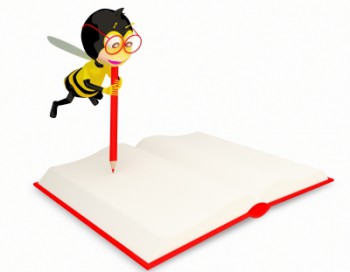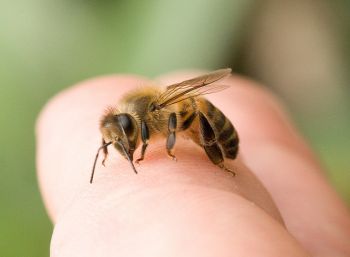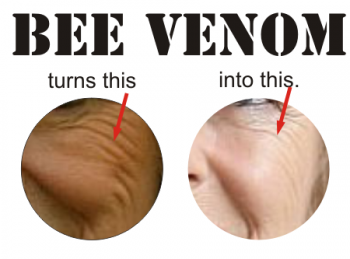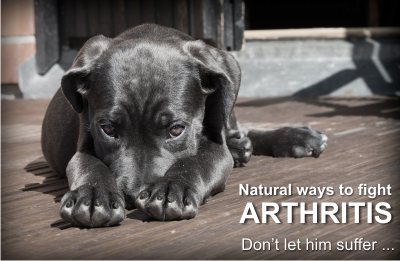Since ancient times, people knew about the healing properties of a bee sting. Painful and healing, just like Eros’ arrows of love, painful but ultimately pleasant.
Bee venom was probably one of the first natural cure for arthritis. Apitherapy was used in ancient civilization of China, India, Egypt, Babylon and Greece. We still wonder if beekeeping appeared because of the healing stings of the bees, or because of the sweetness of honey.
Bee venom composition
Main biological and therapeutic effects of bee venom and its components
The composition of bee venom is well studied, it is a complex mixture of of proteins, peptides and low molecular components. The main components are proteins and peptides.
There is a difference between fresh and dried bee venom, given by the volatile components, but otherwise, the overall biological activity is similar.
The enzymes are proteins that catalyze specific reactions.
There are 5 enzymes in BV: phospholipase A2, phospholipase B, hyaluronidase, phosphatase, α-glucisidase.
Polypeptides are made of 2 or more amino acids. The main polypeptides are: melittin, apamine, MCD peptide, secapide, pamine, minimine, adolapine, procamine A, B, Protease inhibitor, tertiapide, cardiopep, melittin F.
Most studies attribute bee venom’ healing properties to these peptides.
The low molecular compounds are different: amino acids, catecholamines, sugars and minerals. In some preparations, sugars were also identified, but if the bee venom is collected with a collector which prevents its contamination by pollen and nectar, then there are no sugars.
Melittin in bee venom
It’s the biologically active peptide in BV, by 50-55 %
Effects:
– Membrane-active, diminishes surface tension of membranes;
– Anti-inflammatory in very small doses;
– Stimulates smooth muscles;
– Increases capillary permeability, increasing blood circulation and lowering the blood pressure, lowers blood coagulation,
– immunostimulatory
– immunosuppressive,
– Radiation protective,
– influences the central nervous system,
– Anticancer, antibacterial, antifungal, antiviral
BUT, higher doses are inflammatory and hemolytic!
Phospholipase A in bee venom
Enzyme hydrolyzing phospholipids 10-12 %
Effect:
– destroys phospholipids and dissolves the cell membrane of blood bodies;
– lowers the blood coagulation and blood pressure,
– prevents neuronal cell death caused by prion peptides
BUT induces inflammation, the strongest allergen and thus the most harmful bee venom component!
Phospholipase B
cleavage of the toxic lysolecetin 1 %
Effect: Detoxicating activity
Hyaluronidase
Catalyses hydrolysis of hyoloronic acid, the tissue cement 1-2 %
Effect:
– catalyses the hydrolysis of proteins, thus enabling the penetrating of bee venom into the tissue;
– dilates blood vessels and increases their permeability, causing an increase of blood circulation;
BUT it is allergenic.
Apamine
Biologically active peptide 2-3 %
Effect:
– Anti-inflammatory stimulating the release of cortisone,
– antiserotonine action
– increases the defence capability
– Immuno-supressor, stimulates the central nervous system in very small doses
BUT higher doses are neurotoxic!
MCD
mast cell degranulating peptide 401, 2-3 %
Effect:
– Lyses mast cells, releasing histamine, serotonine and heparine
– Melittin-like effect increasing capillary permeability
– Anti-inflammatory
– simulates the central nervous system
Adolapin
Biologically active peptide 1 %
Effect:
– Inhibits the specific brain enzymes cyclooxigenase and lipooxigenase
– Decreases inflammations by, anti-rheumatic, decreases pain, antipyretic
– Inhibits the aggregation of erythrocytes
– Has relatively low toxicity
Protease-Inhibitors
Biologically active peptides 3-4 %
Effects:
– Inhibits the activity of different proteases like trypsin, chymotprypsin, plasmin, thrombin, thus decreasing inflammation,
– anti-rheumatic
– Low toxicity
Secapin, tertiapin, cardiopep, minimin, procamine
3-5 %
Effect: These peptides have an uncertain role in the physiological action of bee venom
– Antiradiation effects
– cardiopep has antiarhythmic effects
Histamine
Neurotransmitter 0.7-1.5 %
Effect:
– Dilates blood vessels, increasing the permeability of blood capillaries and increases blood circulation;
Stimulates smooth muscles;
BUT it’s allergenic
Dopamine, Noradrenaline
Neurotransmitters 0.2-1.5 %
Effect: The low concentrations in bee venom do not cause physiological effects in mammals, but active when injected in invertebrates.
Alarm pheromones
4-8 %
Effect: These are complex ethers, causing alarm of the bee colony and its defensive behaviour. No effect in mammals.
Of all bee products bee venom bee venom produces by far the greatest number of biological effects. It has the highest recognition in modern medicine, many of its components being also used in experimental pharmacology. So far.
As a conclusion:
Melittin is the main bee venom component, with many positive biological effects and a relatively low toxicity.
The MCD peptide and phospholipase A are the two most toxic components.
In order to achieve definite biological effects, individual bee venom components can be used. For example, the Chinese make melittin spray for public sale. Or, you can find some peptide here: http://www.bachem.com/.
Of course, we do not recommend taking anything without consulting the physician first.
What is bee venom therapy good for?
According to Stefan Bogdanov in Bee Product Science, here are the conditions that can be treated with this therapy:
| Disease type | Application, details |
| Arthritis | Both osteoarthritis and rheumatic arthritis Rheumatic arthritis being more susceptible to BVT |
| Against frozen shoulder | BV acupuncture |
| Diseases of the central and peripheral nervous system (CNS, PNS) |
· Multiple sclerosis · Dementia · Post stroke paralysis · Polyneuritis · Ganglion nerve inflammation · Cerebellar ataxy (muscular disfunction) · Syringomyelia (pain of extremeties, headache) · Inflammation of facial nerve · Myopathy (neuromuscular disease) · Trigeminal neuralgia · Posttraumatic inflammation of plexus nerve · Inflammation of arachnoid CNS membrane · Parkinson · Against lower back pain |
| Heart and blood system | · Hypertension · Arteriosclerosis · Endarteritis (chronic inflammation of the inner layer of arteries) · Angina pectoris · Arrhythmia |
| Skin diseases | · Eczema, dermatitis, psoriasis · Furunculosis (recurring boil) · Healing of cicatrices · Baldness |
| Other disease | · Opthamology · Gastroentorology: colitis, ulcers, · Pulmonology: asthma, bronchitis, · Otorinolaringology: pharingytis, tonsillitis, ear nerve neuritis · Endocrinology · Urology, gynecology · Cancer and HIV infections |
However, bee venom acupuncture is not the only way bee venom can be used to treat all these conditions and diseases. Other methods include: injections, electro and ultra sonophoresis, creams, ointments and liniments.
Here are as recommended by Simics, M. in Bee Venom: Exploring the Healing Power, p. 38., ext. version.
| Diseases | Bee Sting & Apipuncture | Injection | Electro & Ultra- sonophoresis |
Cream, Liniment, Ointment |
| Arthritis | X | X | X | X |
| Bee Venom Allergy | — | X | — | — |
| CFS | X | X | — | — |
| Eczema | X | X | — | X |
| Fibromyalgia | X | X | — | — |
| Frostbite | — | — | — | X |
| Gout | X | X | — | X |
| Immune Diseases | X | X | — | — |
| Inflammatory Diseases | X | X | — | — |
| Ischias | X | X | X | X |
| Joint Inflammation | X | X | X | X |
| Lumbago Neuralg. | X | X | X | X |
| Lyme Disease | X | X | — | — |
| Mentsrual Cramps | X | X | — | — |
| Multiple Sclerosis | X | X | — | — |
| Muscle, Joint Pain | X | X | X | X |
| Periferial Vasc. Dis. | X | X | — | — |
| Post Herperic Neur. | X | X | — | X |
| Premenstrual Syndr. | X | X | — | — |
| Psoriasis | X | X | X | X |
| Rheumatism | X | X | X | X |
| Raymonds Disease | X | X | — | — |
| Scars | X | X | — | — |
| Sciatica | X | X | — | — |
| Sport Injuries | — | — | X | X |
| Tennis Elbow | X | X | — | X |
The Russian doctor Ludyanski has summarised his experience of the application of bee venom in a big Russian hospital.
Here is a report on the results of his patients, after being treated with bee venom, in a Russian hospital. (LUDYANSKII, E A (1994) Apitherapy, 1231. Poligrafist Vologda, Russia). I say they are promising results, worth trying.
Related articles:
Bee venom a possible natural treatment for Parkinson’s disease
Bee venom for therapy: Alzheimer’s disease
Bee venom for therapy: arthritis. What is apipuncture?
Bee venom for therapy: Multiple Sclerosis
Bee venom for therapy: homeopathic remedies
Venom Immunotherapy or How to treat bee sting allergy for good!
Bee venom – a potential natural treatment for HIV
Picture sources:
– “Albrecht Dürer – Cupid the Honey Thief – WGA07372” by Albrecht Dürer – Web Gallery of Art, Licensed under Public Domain via Wikimedia Commons;
– “Spelling Bee Writing on notebook Stock Photo” picture credit pixtawan via free digital photo;
References
– http://www.beevenom.com/Therapmethodsbeevenom.htm#rap
– ASAFOVA, N; ORLOV, B; KOZIN, R (2001) Physiologically active bee products (in Russian). Y.A.Nikolaev; Nijnij Novgorod; 360 pp;
– JEONG, J K; MOON, M H; BAE, B C; LEE, Y J; SEOL, J W; PARK, S Y (2011) Bee venom phospholipase A2 prevents prion peptide induced-cell death in neuronal cells. International Journal of Molecular Medicine 28 (5): 867-873;
– LUDYANSKII, E A (1994) Apiterapia. Vologda, Russia; Poligrafist; 460 pp;
– SHKENDEROV, S; IVANOV, T (1983) Pcelni Produkti, The Bee Products (in Bulgarian). Zemizdat (Abstract in Honey bibliography): 1-238;
– SON, D J; LEE, J W; LEE, Y H; SONG, H S; LEE, C K; HONG, J T (2007) Therapeutic application of antiarthritis, pain-releasing, and anti-cancer effects of bee venom and its constituent compounds. Pharmacology & Therapeutics 115 (2): 246-270;
– URTUBEY, N (2005) Apitoxin: from bee venom to apitoxin for medical use. Termas de Rio Grande Santiago del Estero, Argentina
– Stefan Bogdanov, http://www.bee-hexagon.net





